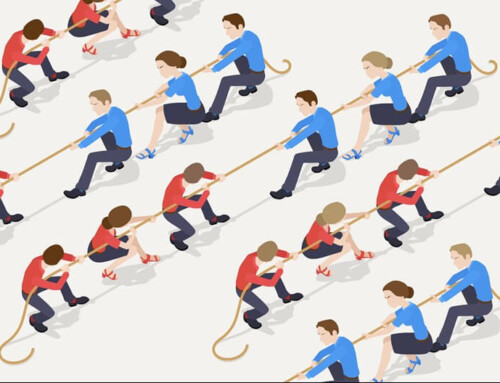More than one salesperson has wondered why a lead that seemed perfectly qualified and promising disappeared or went “radio silent.” Salespeople ponder questions such as:
- What, if anything, did I do wrong?
- Did the prospect choose a different solution?
- Was the prospect really as qualified as I thought they were?
- What really happened, and what can I learn from this experience?
Sales professionals can and do make mistakes. But often, the problem with lead abandonment is rooted in the larger process of lead nurturing. Refining the process may be required to keep nudging leads down the sales pipe. Salespeople have a great deal to juggle: finding new opportunities, qualifying these prospects, building relationships, and keeping current customers engaged.
The solution is complex but effective:
- Leverage automation in smart, innovative ways
- Establish and enforce guided selling
- Improve communication and teamwork between the marketing and sales teams
Why is the third piece important? Siloed departments, especially between marketing and sales, will seriously harm all parties’ ability to be effective.
According to Forrester Research, only 8 percent of B2B companies have sales and marketing departments tightly aligned. (1) As a result, just 25 percent of marketing-generated leads are typically high enough quality to immediately advance to sales for deep sales conversations and revenue conversion. (1)
This three-part series provides an in-depth study to prevent lead abandonment from occurring and speed up the sales cycle. The first step starts with clarifying the difference between marketing engagement and sales-ready conversions.
The Difference Between Marketing and Sales-Ready Conversions
While they may sound similar, there are distinct differences between marketing conversions and sales-ready conversions. The way they connect – or fail to do so – impacts the success of sales efforts.
Marketing conversions have a purpose: to get leads into the pipeline through content such as white papers, webinars/webcasts and mailing lists (incorporating list segmentation). Engaging conversations that take place through social media also play a role in building brand awareness.
Sales-ready conversations are defined by marketing through a process called lead scoring. This process works by reviewing the interactions that a visitor has with content. It then scores each type of interaction differently. For example, a website visit receives a lower score than a white paper download. When enough “points” have been accumulated, the “lead” is defined as sales-ready. This scoring process doesn’t necessarily mean that they are ready for sales deals to close. However, it does mean that there is enough interaction occurring with content, the brand, and specific topics to warrant one-on-one engagement.
How to Avoid Common Pitfalls
- Encourage Open Exchange of Information
Sales and marketing teams can run into trouble when they work and communicate in silos. Message consistency is lost, it may not resonate with the audience, and the lead score may not be weighted correctly. When the last scenario occurs, salespeople chase after leads who are not qualified, not ready to buy, or both. In fact, only 40 percent of salespeople say they find lead scoring valuable. (2) However, a recent case study demonstrated aligning sales and marketing results in a 34 percent increase in revenue. (7) The moral of the story? Aligning sales and marketing teams optimizes lead opportunities – and revenue. - Qualify Sales-Ready Leads
Sales professionals should conduct due diligence. They should not assume that a high lead score means the prospect is ready to purchase. Sales professionals must still access, qualify and quantify these opportunities. More than 40 percent of sales professionals say this is the most challenging part of the sales process. (3) The struggle to qualify leads is evident in that salespeople target 50 percent of the prospects provided as a bad fit for their products or services. (4) - Enhance Prospecting and Qualifying Skills
While lead pipelines are essential, they must be tempered with quotas for prospecting outside of systems established within the company. This is an issue at many companies, with 77.3 percent of salespeople indicating their company provides at least one-quarter of their leads. (4) Top sales performers do not rely on company systems to feed their opportunities. Instead, they use various methods, including social selling, to prospect their own opportunities – and augment these opportunities with company-provided leads – to excel. 47 percent of top performers ask for referrals consistently, versus just 26 percent of non-top performers. (4) - Train Salespeople to Utilize Existing Automation
Top sales performers leverage the automation aspects (lead nurturing) built within sales pipelines to do the heavy lifting for them. This strategy yields faster closings, as nurtured leads close after a 23% shorter sales cycle than those not nurtured. (5) Sales and marketing must be aligned to produce this desired result. Lead nurturing expertise drives a 50 percent increase in sales-ready leads, along with a 33 percent decrease in the cost of nurturing them. (6)
When organizations understand how marketing conversions create sales-ready conversions, they have the knowledge to set their sales team up for success. And when companies apply these concepts, they will enjoy a significant improvement in sales numbers.
Part One | Part Two | Part Three
Uncertain times call for creative thinking. Contact Gavel International to be inspired with solutions that connect and engage your people.
____________________________
SOURCES:
1 https://www.business2community.com/b2b-marketing/15-need-to-know-lead-qualification-stats-for-b2b-marketers-with-takeaways-02073532
2 http://www.b2bnn.com/2015/03/b2b-marketing-can-see-future-predictive-lead-scoring/
3 https://research.hubspot.com/charts/part-of-the-sales-process-reps-struggle-with
4 https://www.marcwayshak.com/sales-statistics/
5 http://customerexperiencematrix.blogspot.com/2010/09/hard-data-to-justify-your-marketing.html
6 https://www.hubspot.com/marketing-statistics
7 https://www.leadfeeder.com/blog/lead-generation-trends/#gref
This article was last updated on September 22, 2022
- 5 Ways to Build a Productive and Participatory Meeting Culture - March 31, 2025
- Memorable Meetings in Abundant Sunshine and the Natural Beauty of Phoenix - March 24, 2025
- Build a Culture of Curiosity and Solutions-Driven Change - March 17, 2025






